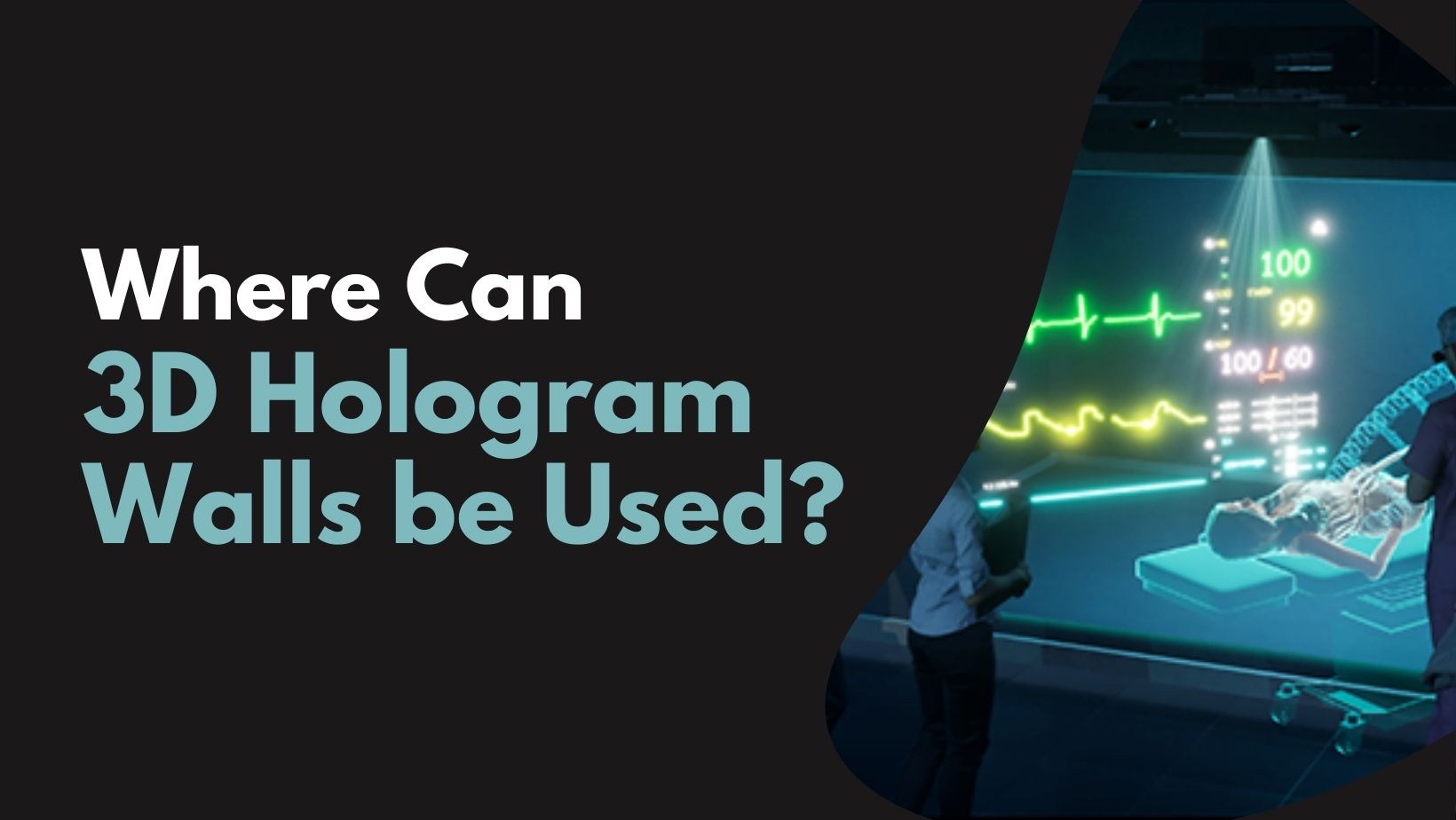In modern times, 3D hologram walls stand out as a marvel that blurs the line between imagination and reality. Such innovative displays have quickly gained attention their aesthetic appeal and practical applications across various industries. From entertainment to education, healthcare to retail, the possibilities seem boundless. Explore and select the perfect 3D holographic displays with one of the premier holographic display providers i.e., Vision3D. Let’s delve into the versatile uses of the 3D holographic wall and explore how they are revolutionizing different sectors.
Applications of 3D Holographic Wall
Some of the applications of 3D holographic walls are detailed below for you.
Entertainment Industry With 3D Holographic Walls
Entertainment is perhaps the most obvious domain where 3D hologram walls shine. Imagine stepping into a concert venue where stages designed with dynamic holographic visuals and music are available. Such hologram walls can create immersive experiences for audiences. It also transports them to fantastical realms or brings their favorite characters to life. 3D display walls can enhance your viewing experience of cinemas by projecting scenes in a three-dimensional format. It provides depth and realism like never before. From movie premieres to theme parks, the entertainment industry captivates audiences and elevates storytelling to new heights.
Holographic Wall Usage in Education and Training
In the realm of education, the 3D holographic wall offers a revolutionary approach to learning. Imagine a classroom where historical events are recreated in vivid detail, allowing students to witness pivotal moments firsthand. Complex scientific concepts can be visualized in three dimensions, making abstract theories more tangible and easier to comprehend.
Furthermore, in professional training environments, such as medical schools or engineering workshops, 3D hologram walls can simulate realistic scenarios for hands-on practice. Surgeons can rehearse procedures, architects can visualize designs, and mechanics can troubleshoot machinery, all within an immersive holographic environment.
Holographic Wall Usage In Healthcare
In healthcare, the 3D display wall holds tremendous potential for diagnosis, treatment, and patient care. Medical imaging data, such as MRI scans or CT scans, can be rendered as holographic representations, allowing doctors to examine anatomical structures with greater precision and clarity. Surgeons can also use holographic overlays during procedures, providing real-time guidance and enhancing surgical accuracy.
Moreover, in rehabilitation settings, 3D hologram walls can facilitate interactive therapy sessions, helping patients regain motor skills or cognitive function through engaging exercises. By merging technology with healthcare, these holographic displays are revolutionizing the way medical professionals diagnose, treat, and rehabilitate patients.
Holographic Wall Usage in Retail and Advertising
In the retail industry, 3D hologram walls are transforming the shopping experience. Imagine walking into a store where products are showcased as holographic displays, allowing customers to interact with virtual prototypes before making a purchase. These immersive experiences not only attract attention but also drive engagement and increase sales.
Furthermore, in advertising, 3D hologram walls offer innovative ways to promote products and brands. From interactive billboards to experiential marketing installations, holographic displays captivate audiences and leave a lasting impression. By leveraging this technology, advertisers can create memorable campaigns that stand out in a crowded marketplace.
Holographic Wall Usage In Architectural Design
In the field of architecture and design, the 3D holographic wall offers a new frontier for visualization and presentation. Architects can showcase their designs as holographic models, allowing clients to explore every detail from every angle. This immersive approach enables stakeholders to better understand spatial relationships and make more informed decisions.
Moreover, urban planners can use 3D hologram walls to visualize proposed developments within existing cityscapes, facilitating community engagement and consensus-building. By bringing architectural concepts to life in three dimensions, holographic displays are reshaping the way we conceptualize and communicate design ideas.
Conclusion
So, the 3D display wall represents a transformative technology with wide-ranging applications across industries. From entertainment to education, healthcare to retail, and beyond, these innovative displays are revolutionizing the way we interact with information, environments, and each other. As technology continues to evolve, the possibilities for creative expression and practical utility are limited only by our imagination. Embracing the potential of 3D hologram walls opens doors to a future where virtual and physical worlds seamlessly merge, enriching our lives in ways we have yet to fully explore. To know more about holographic displays, call Vision3D customer care number – +91-8971953451.
